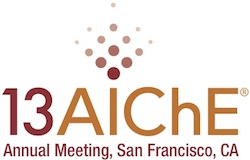

Maximizing CO2 uptake in concrete blocks carbonationYixin Shao1* , Yaodong Jia1 , Zhen He2 and Liang Hu31Department of Civil Engineering , McGill University , Montreal , Canada H3A 2K6 2School of Water Resource and Hydropower , Wuhan University , Wuhan , China 430072 33H Company , Lexington , KY , USA 40511 *Corresponding author: yixin.shao@mcgill.ca Abstract: Portland cement based concrete products are well known by its reactivity with carbon dioxide. It is the calcium compounds in cement that react with CO2 and produce thermodynamically stable calcium carbonates. It was estimated at full carbonation when all CaO reacts with carbon dioxide , CO2 uptake by cement could reach to 50% by cement mass , i.e. one ton of cement could uptake half a ton of CO2. Full carbonation could happen in weathering carbonation of concrete in more than 30 years when atmospheric CO2 slowly but progressively reacts with hydration products in matured concrete. Nevertheless it is not a desired reaction since hydration products are decomposed and strength of concrete is reduced. On the other hand , early carbonation during concrete curing provides an ideal process window for CO2 utilization. It is an accelerated hydration and can significantly improve durability performance of concrete. Unlike steam curing which is well commercialized , early carbonation curing has never been used in large scale. One of the limiting factors is the cost of CO2 gas. In near future , high purity low cost CO2 could be available in large quantity as the result of emission regulation. This provides an opportunity for commercial application of carbon dioxide in early concrete carbonation which will integrate carbon capture , utilization and storage (CCUS) into one process and will also show economical and technical benefits. This paper is to present a new carbonation process that incorporates a hydration presetting prior to early carbonation. Concrete products with high water to cement ratio and formed by vibration compaction can be used as candidate products for carbon capture and utilization. Since CO2 uptake capacity is unique for each product and its associated process , concrete block will be used as an example to prove the concept. Concrete blocks have been widely utilized in construction. The US market for concrete blocks and bricks is projected to increase to 4.3 billion units per year in 2014. Concrete blocks are made of calcium silicate cement , porous in nature and mass produced. The block plants are also demographically distributed and strategically located close to CO2 sources such as power plants and cement plants. Currently concrete blocks are produced by steam curing. If steam process can be replaced by CO2 curing , concrete blocks can serve as CO2 sink for carbon storage through utilization. It is also impetus to show energy comparison between steam and CO2 systems. The paper will first introduce the concrete block carbonation process that involves hydration and carbonation in different sequence , based on which a reaction model is proposed to estimate theoretical maximum CO2 uptake within the process window. The reaction kinetics of four cement phases: tricalcium silicate (3CaO·SiO2 or C3S) , dicalcium silicate (2CaO·SiO2 or C2S) , tricalcium aluminate (3CaO·Al2O3 or C3A) , tetra calcium aluminoferrite (4CaOAl2O3Fe2O3 or C4AF) , and four hydration products: calcium hydroxide , calcium-silicate-hydrate , calcium-aluminate-hydrate , calcium aluminate ferrite hydrate , are studied. Based on the reaction kinetics , a model is further verified by cement solution carbonation which represents the ideal reaction conditions and also by normal-weight and lightweight concrete carbonation. Theoretical maximum of CO2 uptake within a 24-hour process window was estimated and compared with experimental CO2 uptake by concrete blocks carbonation. The combination of hydration presetting and carbonation helped enhance reaction efficiency. Hydration presetting of 4-18h could remove 40-60% of free water to create path for CO2 diffusion , make space for carbonate precipitation and produce early hydration products for carbonation. The best CO2 uptake was obtained with relatively high water content in initial mix design followed by 18h presetting and 2 - 4h carbonation. It was 18.3% in normal weight concretes and 24.2% in lightweight concretes. This process window is practically feasible. Theoretical maximum of CO2 uptake was estimated based on assumption that at early carbonation , only C3S , C2S and their hydration products were reactive with CO2. The contribution by aluminate and ferrite phases was neglected. It was also assumed that after hydration presetting , the remaining C3S and C2S were fully carbonated into C-S-H and CaCO3. Based on these assumptions , theoretical maximum CO2 uptake was computed. It was 19.7% with no presetting and 27.1% with 18h presetting. The results were in agreement with cement solution carbonation. CO2 uptake in normal weight concrete reached 67% reaction efficiency after 2h carbonation and CO2 in lightweight concrete reached 89% after 4h carbonation. The higher uptake rate in lightweight concrete was also attributed to reactive slag aggregates. If uptake by aggregates was subtracted from total uptake , lightweight concrete had shown a close value to normal weight concrete. Carbonation at prolonged duration and at high pressure could promote more CO2 uptake. In these cases , C-S-H created by carbonation as well as calcium alunimate and calcium aluminate ferrite phases could be carbonated too. However , full carbonation with 50% CO2 uptake was never reached even after continued reaction for two days. Concrete blocks carbonation will promote the value of CO2 as a commodity for building industry and will permanently store CO2 in thermodynamically stable calcium carbonates. Concrete block is only one of numerous cement-based building products. The annual production of Portland cement in US is about 100 mt. If half of its products could be treated by carbonation at a CO2 uptake rate of 10-25% , CO2 utilization by concrete industry alone could reach 5-12 mt/year.
